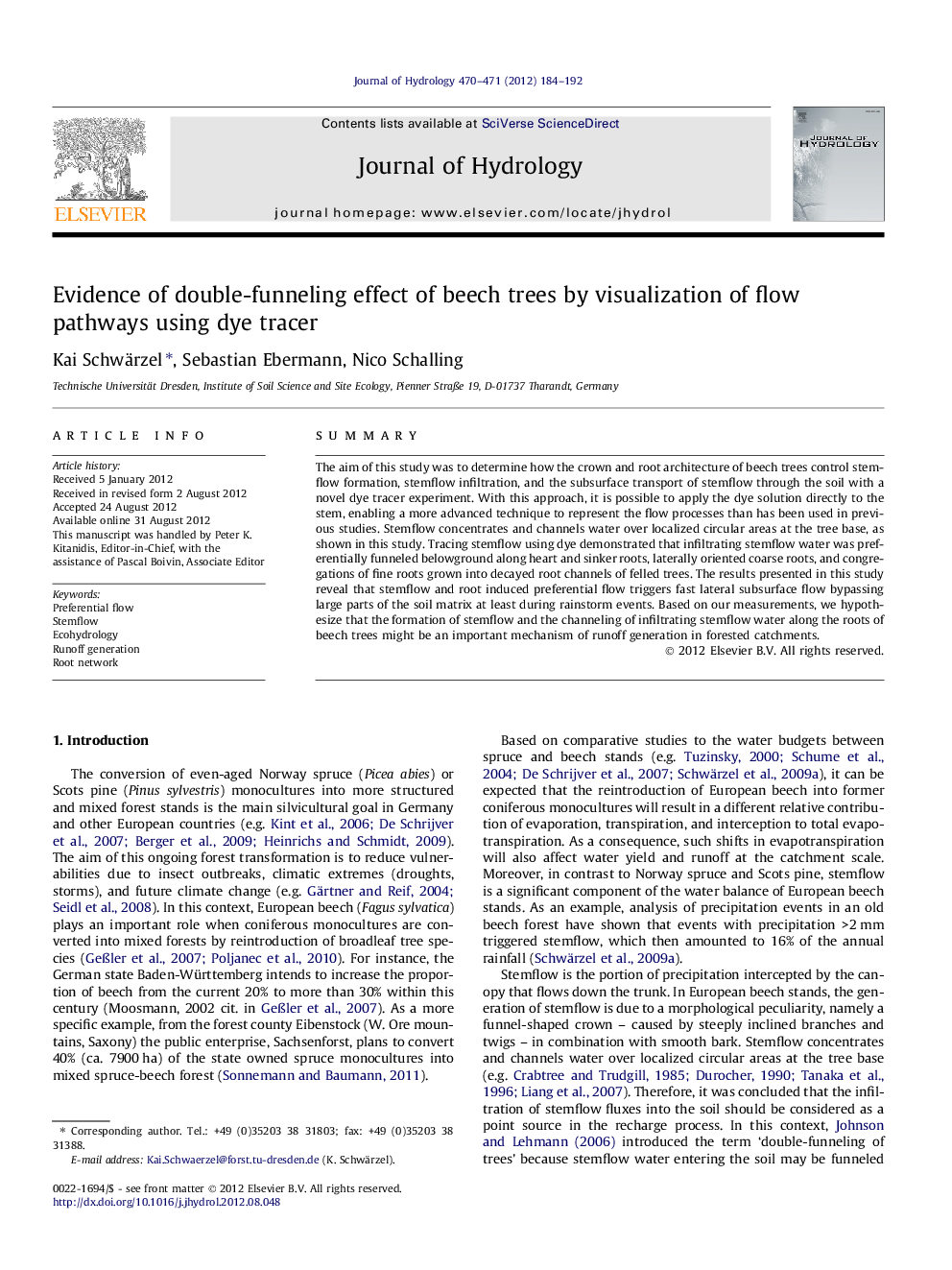| Article ID | Journal | Published Year | Pages | File Type |
|---|---|---|---|---|
| 4576713 | Journal of Hydrology | 2012 | 9 Pages |
SummaryThe aim of this study was to determine how the crown and root architecture of beech trees control stemflow formation, stemflow infiltration, and the subsurface transport of stemflow through the soil with a novel dye tracer experiment. With this approach, it is possible to apply the dye solution directly to the stem, enabling a more advanced technique to represent the flow processes than has been used in previous studies. Stemflow concentrates and channels water over localized circular areas at the tree base, as shown in this study. Tracing stemflow using dye demonstrated that infiltrating stemflow water was preferentially funneled belowground along heart and sinker roots, laterally oriented coarse roots, and congregations of fine roots grown into decayed root channels of felled trees. The results presented in this study reveal that stemflow and root induced preferential flow triggers fast lateral subsurface flow bypassing large parts of the soil matrix at least during rainstorm events. Based on our measurements, we hypothesize that the formation of stemflow and the channeling of infiltrating stemflow water along the roots of beech trees might be an important mechanism of runoff generation in forested catchments.
► A novel dye tracer experiment for root channelization of stemflow was designed. ► Stemflow concentrates water over localized circular areas at the tree base. ► Infiltrating stemflow water was funneled belowground along the roots. ► Stemflow and root induced preferential flow triggers a fast response to rainstorms.
